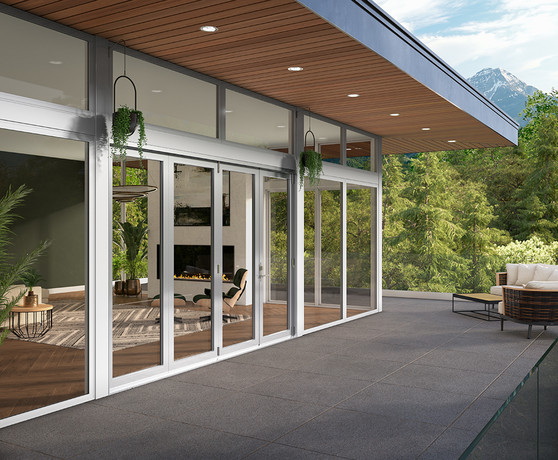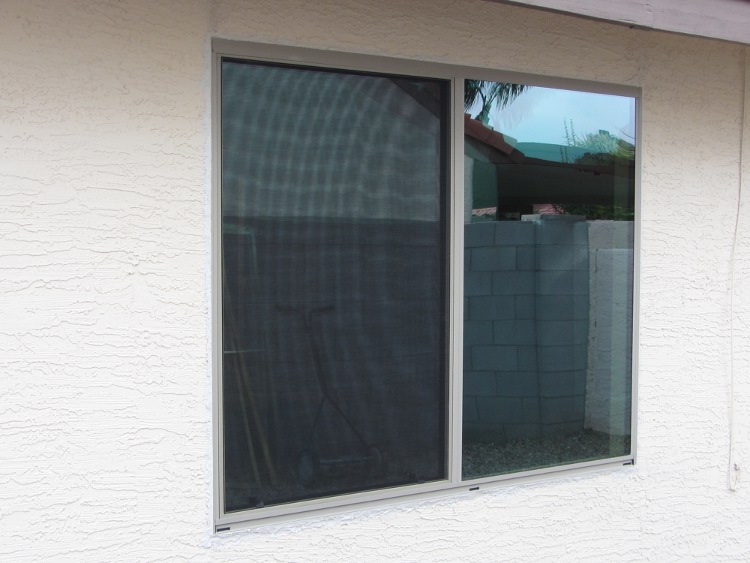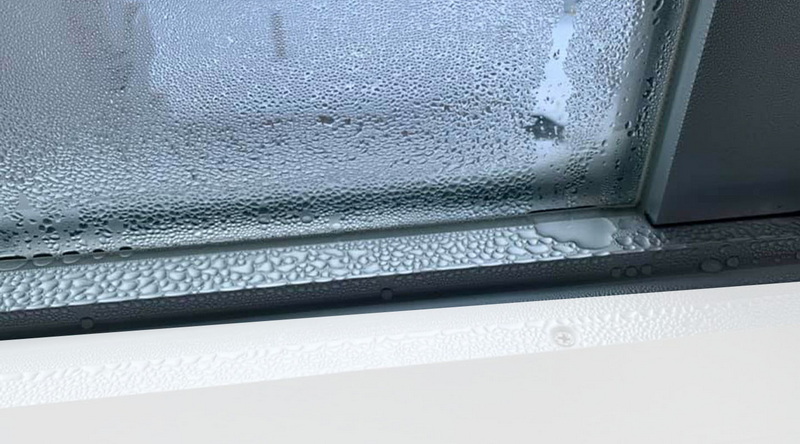English


Views: 222 Author: Dream Publish Time: 2025-01-17 Origin: Site











Content Menu
● Understanding Window Condensation
● Effects of Condensation on Aluminum Windows
● How to Stop Aluminum Windows From Sweating
● Additional Strategies for Prevention
>> 5. Utilize Window Ventilation Systems
>> 7. Install Secondary Glazing
>> 8. Use Hygroscopic Materials
● Understanding Seasonal Variations
● FAQ
>> 1. What is the primary cause of condensation on aluminum windows?
>> 2. How can I measure indoor humidity levels?
>> 3. Are there specific types of aluminum windows that are less prone to condensation?
>> 4. Can I prevent condensation by using window treatments?
>> 5. Is it necessary replace my aluminum windows if they sweat?
Aluminum windows are a popular choice for many homeowners due to their sleek appearance, durability, and low maintenance. However, one common issue that arises with aluminum windows is condensation, often referred to as "window sweating." This phenomenon occurs when warm, moist air comes into contact with the cooler surfaces of the window, leading to water droplets forming on the glass and frame. In this article, we will explore the causes of condensation on aluminum windows, its effects, and practical solutions to prevent it.

Condensation occurs when warm air meets a cold surface. In the case of aluminum windows, the metal frames conduct heat away from the interior space quickly. When warm indoor air hits these cold surfaces, it cools down and loses its capacity to hold moisture, resulting in water droplets forming on the glass and frame.
- High Humidity Levels: Indoor humidity levels that exceed 50% can contribute significantly to condensation. Activities such as cooking, showering, and even breathing can increase indoor humidity.
- Temperature Differences: A significant temperature difference between indoor and outdoor environments can exacerbate the issue. For example, during winter months when indoor heating is used extensively.
- Poor Ventilation: Lack of airflow can trap moisture indoors, increasing humidity levels. Homes that are tightly sealed for energy efficiency may experience more condensation.
- Thermal Conductivity: Aluminum is a highly conductive material, which means it can quickly lose heat and cause condensation to form more readily than other materials like vinyl or fiberglass.
Excessive condensation can lead to several problems:
- Mold Growth: Persistent moisture can create an environment conducive to mold growth, posing health risks. Mold can lead to respiratory issues and allergic reactions.
- Water Damage: Continuous exposure to water can damage window frames and surrounding structures, leading to costly repairs. Water damage can weaken structural integrity over time.
- Decreased Energy Efficiency: Condensation indicates that heat is escaping through the windows, which can increase heating costs. This inefficiency means your HVAC system has to work harder to maintain comfortable temperatures.
To effectively reduce or eliminate condensation on aluminum windows, consider implementing the following strategies:
- Use Dehumidifiers: Installing dehumidifiers in areas prone to high humidity (like kitchens and bathrooms) can help maintain optimal humidity levels. Dehumidifiers work by pulling moisture from the air and collecting it in a reservoir.
- Ventilation: Ensure proper ventilation in your home by using exhaust fans in kitchens and bathrooms. Open windows when weather permits to allow fresh air circulation. Cross-ventilation helps exchange stale air for fresh air.
- Thermal Breaks: Consider installing aluminum windows with thermal breaks. These are barriers made from less conductive materials that reduce heat transfer. Thermal breaks help keep the interior surface warmer and reduce condensation risk.
- Insulated Glass Units (IGUs): Upgrading to double or triple-pane insulated glass units can significantly minimize condensation by providing better insulation. The air or gas between panes acts as an insulating barrier.
- Ceiling Fans: Use ceiling fans to promote air circulation within rooms. This helps distribute warm air evenly and reduces localized cold spots where condensation may form.
- Open Blinds or Curtains: Allowing sunlight in by keeping blinds or curtains open during the day can help warm up window surfaces. Sunlight increases the temperature of window surfaces, reducing the likelihood of condensation forming.
- Check Seals: Inspect window seals regularly for any signs of wear or damage. Replacing faulty seals can prevent moisture from entering between panes. Properly sealed windows are essential for maintaining energy efficiency.
- Clean Windows: Regularly cleaning your windows can prevent dirt buildup, which may trap moisture and exacerbate condensation issues. Use a vinegar-water solution for effective cleaning without leaving residue.

While the above methods are effective, there are additional strategies you can employ to combat condensation on aluminum windows:
Window ventilation systems, such as trickle vents, allow controlled airflow while maintaining energy efficiency levels. These vents help reduce humidity levels by allowing fresh air in without compromising insulation.
Inspect your windows for any gaps or cracks that may allow cold air to enter. Sealing these openings with caulk or weatherstripping can help maintain a consistent indoor temperature and reduce condensation risk.
Secondary glazing involves adding an extra layer of glass inside your existing window frames. This additional barrier improves insulation and reduces temperature differences between indoor air and window surfaces.
Hygroscopic materials absorb moisture from the air and release it when conditions change. Incorporating these materials in your home's design—such as using certain types of drywall or insulation—can help manage humidity levels more effectively.
It's important to recognize that window sweating may vary with seasons:
- Winter Months: During winter months when heating systems are running constantly indoors while outdoor temperatures plummet—this creates an ideal environment for condensation since heated indoor air meets cold surfaces like window panes.
- Summer Months: In contrast, during summer months high outdoor temperatures combined with high humidity levels may lead to different issues such as increased cooling costs if not managed properly through ventilation strategies mentioned earlier.
Condensation on aluminum windows is a common issue that can lead to various problems if not addressed promptly. By understanding the causes and implementing effective strategies such as controlling humidity levels, improving insulation, increasing airflow, utilizing ventilation systems, sealing gaps, performing regular maintenance, and understanding seasonal variations—you can significantly reduce the likelihood of window sweating. Taking these steps not only protects your home but also enhances its energy efficiency while contributing positively towards overall comfort levels throughout different times year-round!

Condensation primarily occurs due to high indoor humidity levels combined with temperature differences between indoor air and cooler surfaces of aluminum frames.
You can measure indoor humidity using hygrometers available at local hardware stores—they display relative percentage indicating current state atmosphere surrounding you!
Yes! Aluminum models equipped with thermal breaks or insulated glass units designed specifically minimize heat transfer thus reducing chances experiencing excessive buildup later down line.
While treatments like curtains/blinds provide slight insulation benefits—they should always accompany other methods effective moisture control ensure best possible outcomes achieved overall!
Not necessarily; while replacement might solve severe cases—many issues related directly back towards improper ventilation/insulation practices easily resolved through proactive measures taken beforehand instead!
[1] https://www.youtube.com/watch?v=BKsFHOa4Mfc
[2] https://www.youtube.com/watch?v=4WadfPJlKHY
[3] https://www.youtube.com/watch?v=0tWXuCNYJe8
[4] https://www.youtube.com/watch?v=UDcvB5selMQ
[5] https://www.youtube.com/watch?v=QkyRtTq1rGY
[6] https://www.tiktok.com/discover/how-to-put-foil-on-window
[7] https://www.tiktok.com/@trust.and.smart.m/video/7295955591497895174
[8] https://www.tiktok.com/discover/tin-foil-on-windows
Seven Requirements for External Doors And Windows of Passive Rooms
How Much Do You Know about The Design Standards for Aluminum Alloy Door And Window Dimensions?
Welding Vs Stainless Steel Fabrication: Understanding The Manufacturing Process Differences
Stainless Steel Fabrication Vs Powder Coated Steel: Durability And Cost Comparison
CNC Machining Vs Stainless Steel Fabrication: Pros And Cons for Industrial Use
Stainless Steel Fabrication Vs Carbon Steel Fabrication: Key Differences Explained
Stainless Steel Fabrication Vs Aluminum Fabrication: Which Is Right for Your Project?
Stainless Steel Grades 201 Vs 304: Cost Vs Performance Breakdown
316L Vs 316 Stainless Steel Grades: Which Is Better for Corrosion Resistance?
Comparing Austenitic Vs Martensitic Stainless Steel Grades: What You Need To Know?
